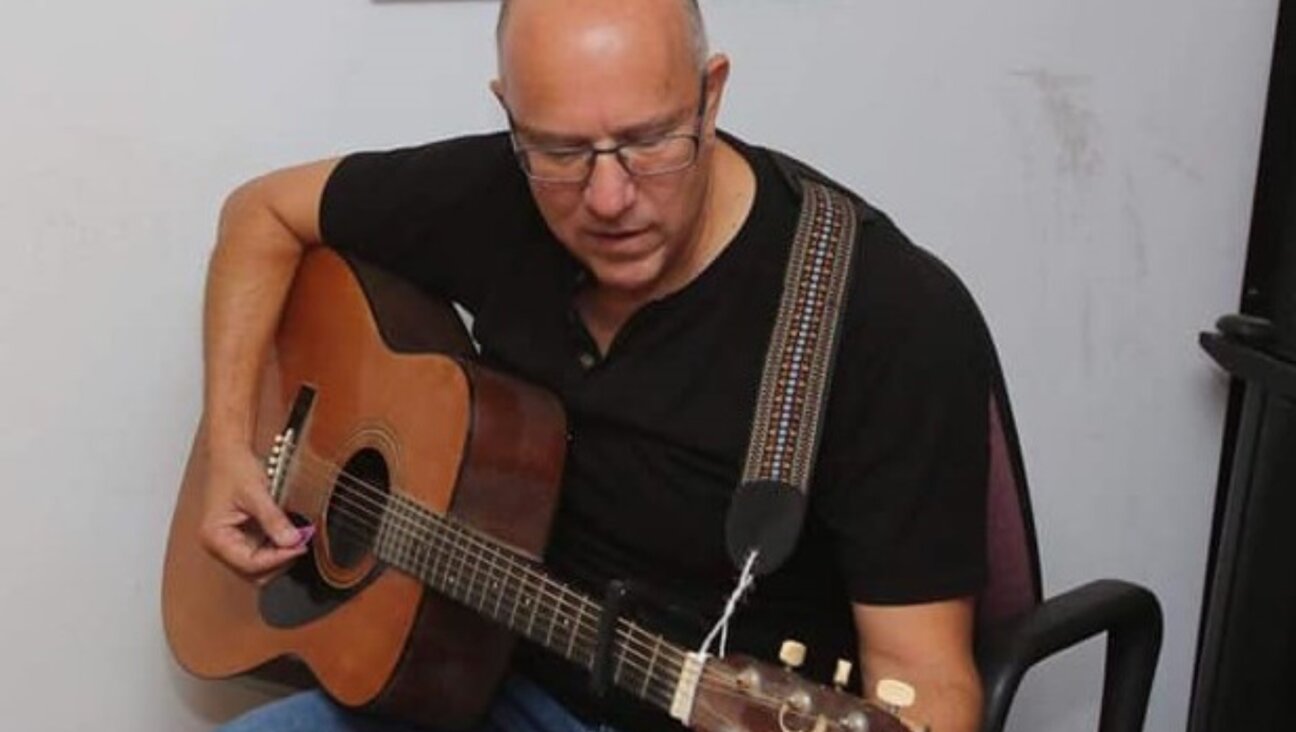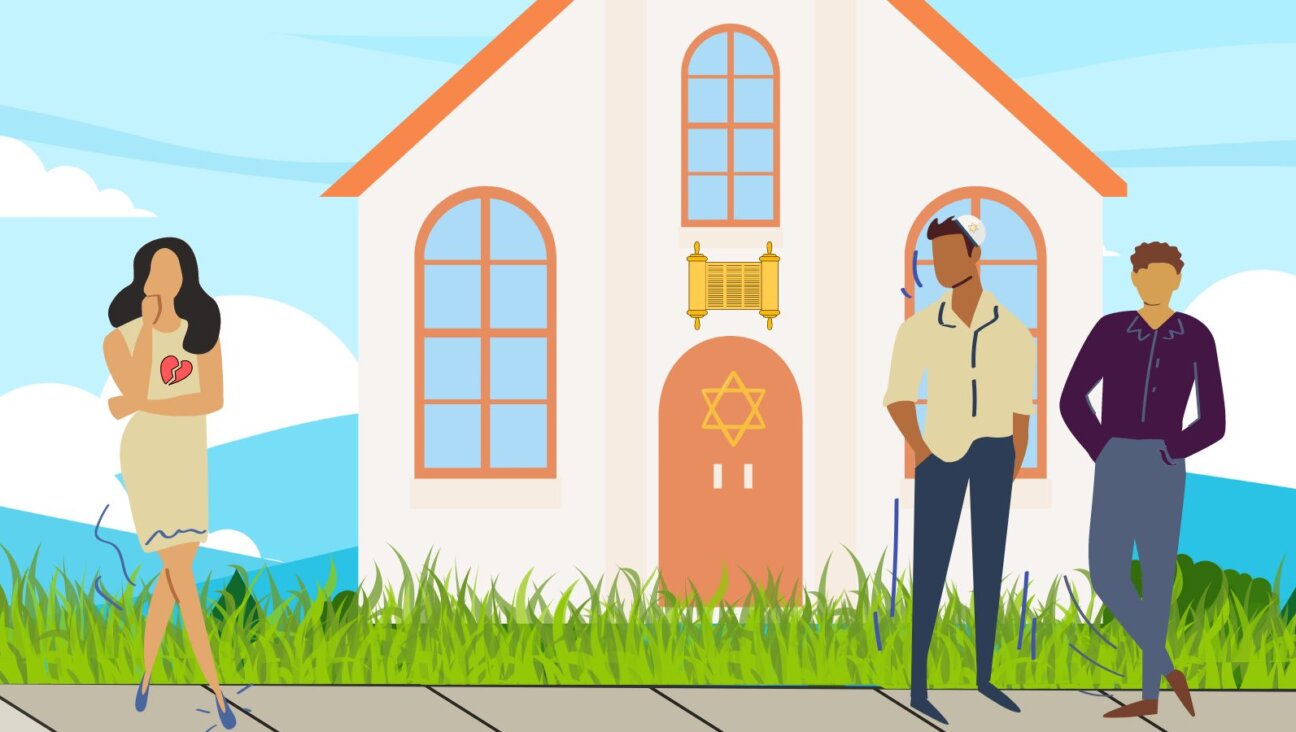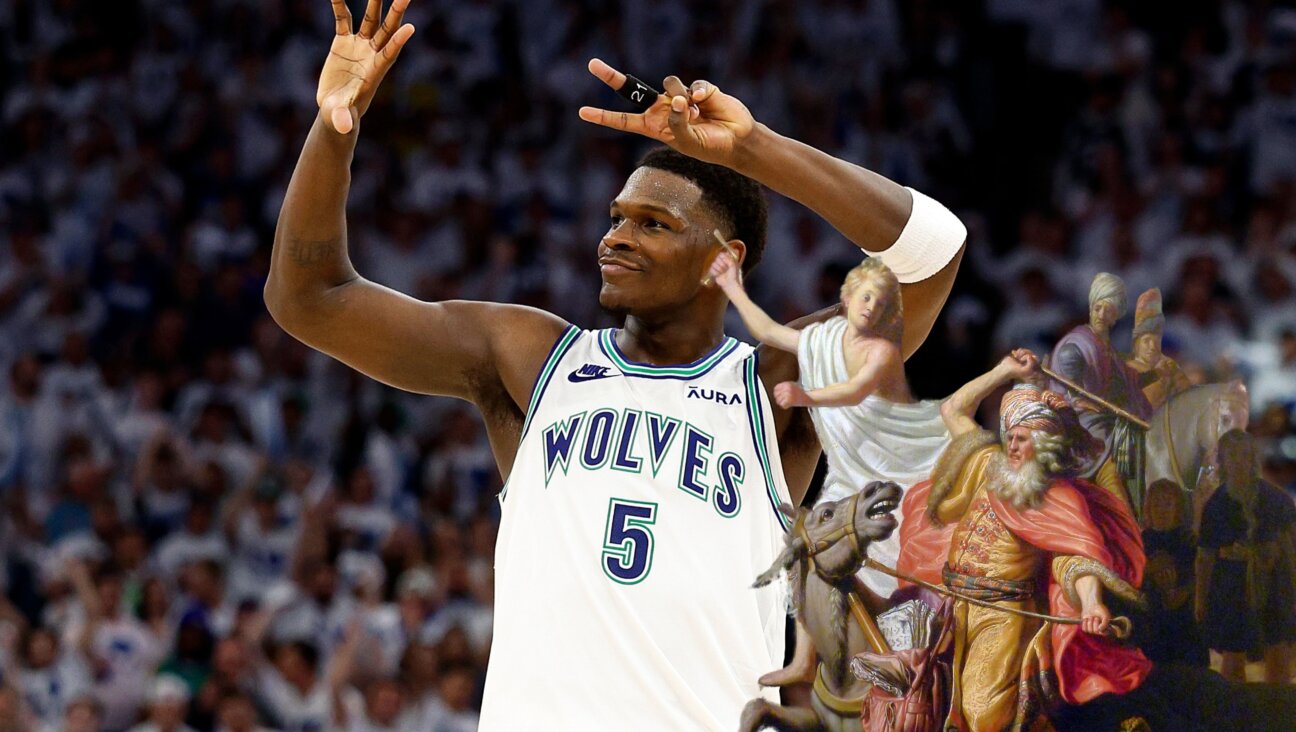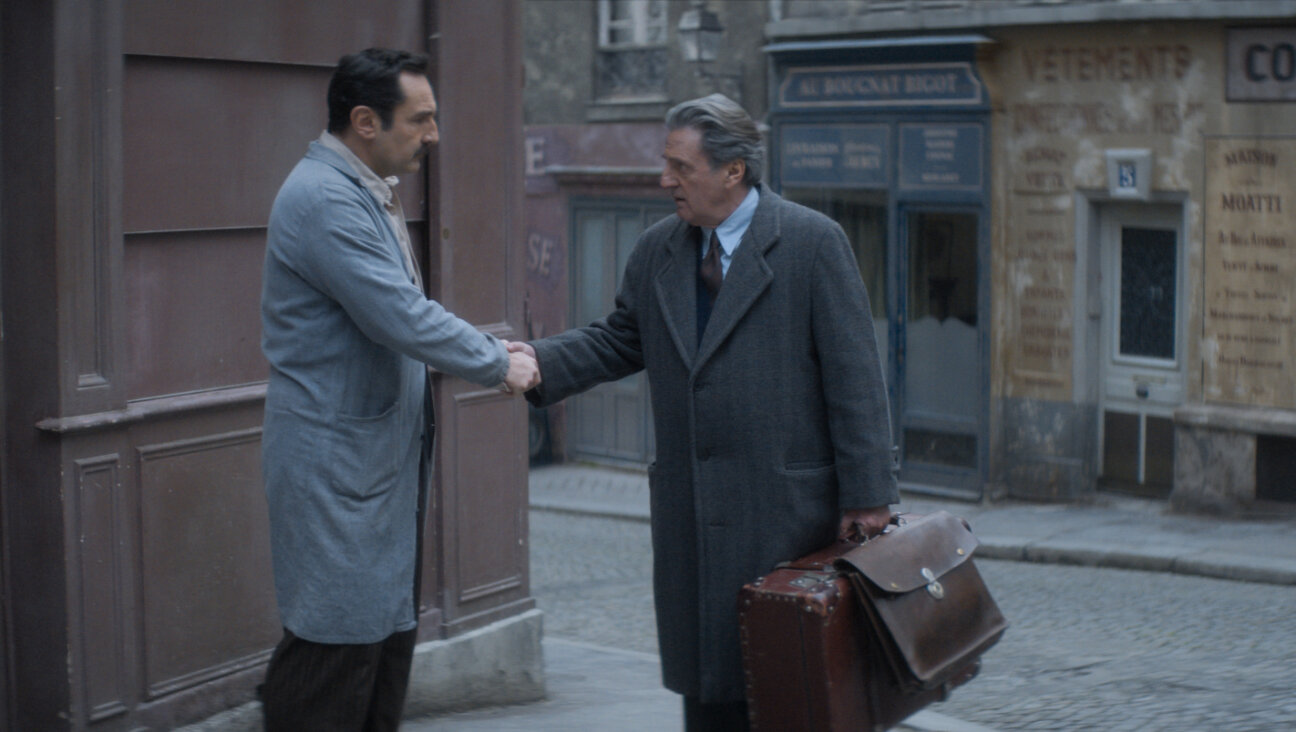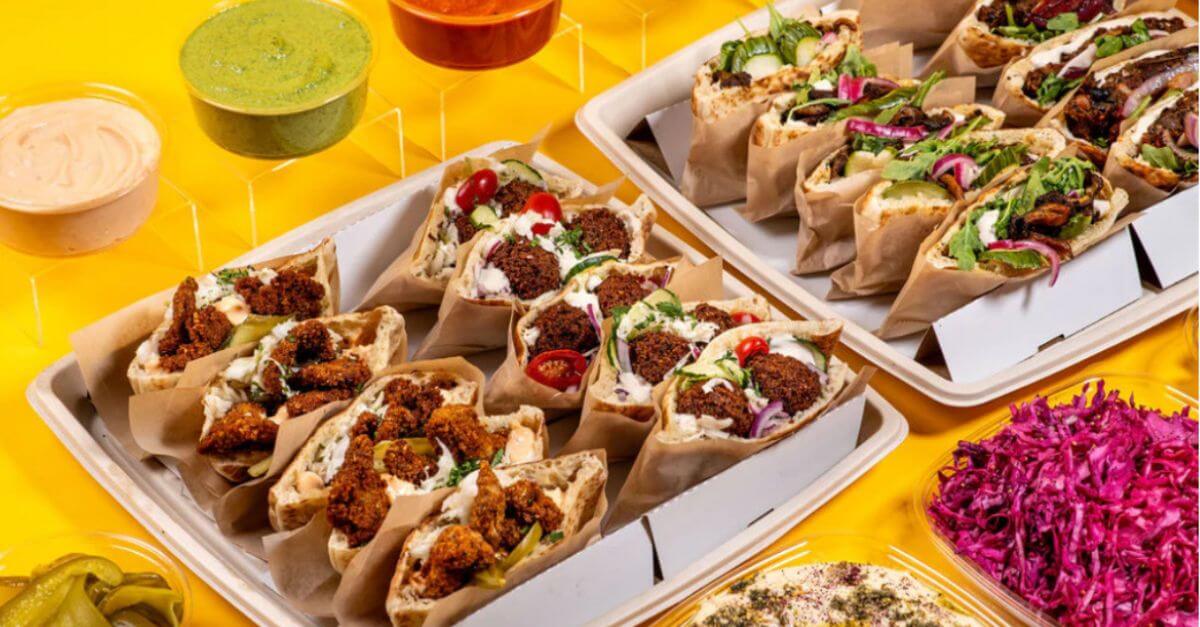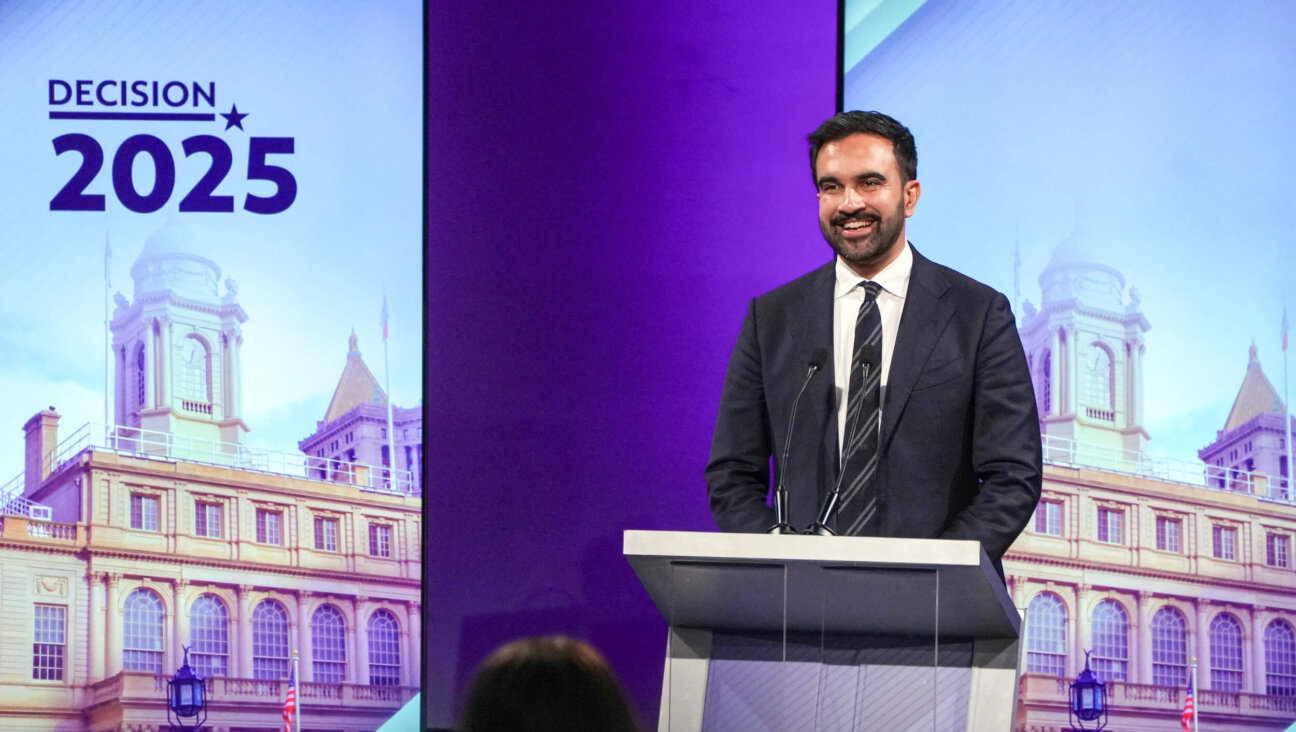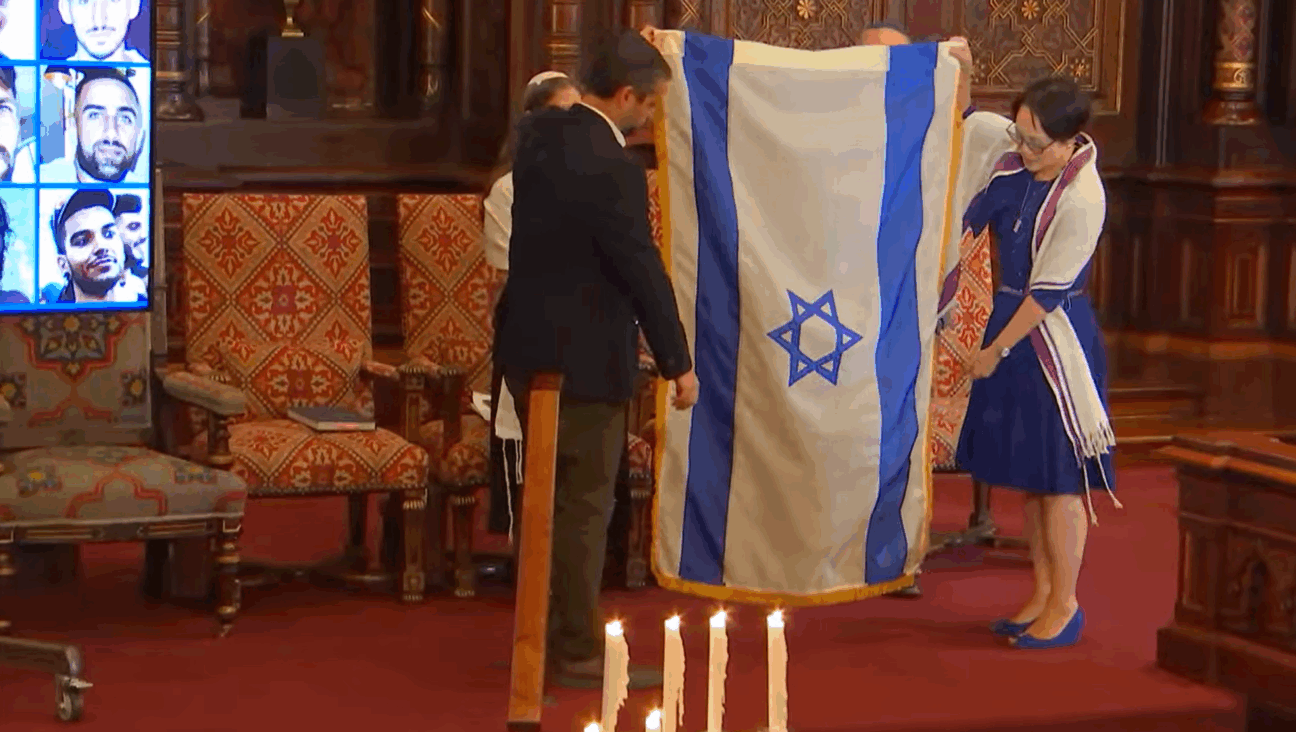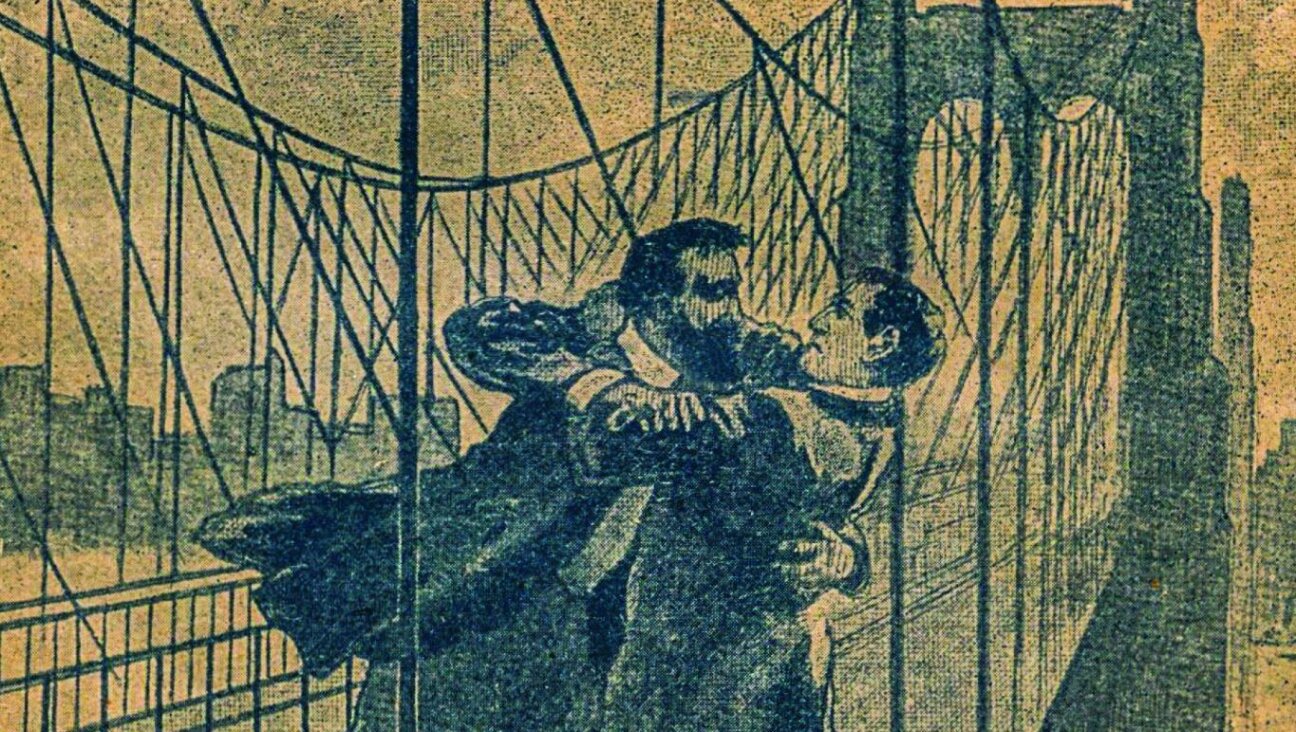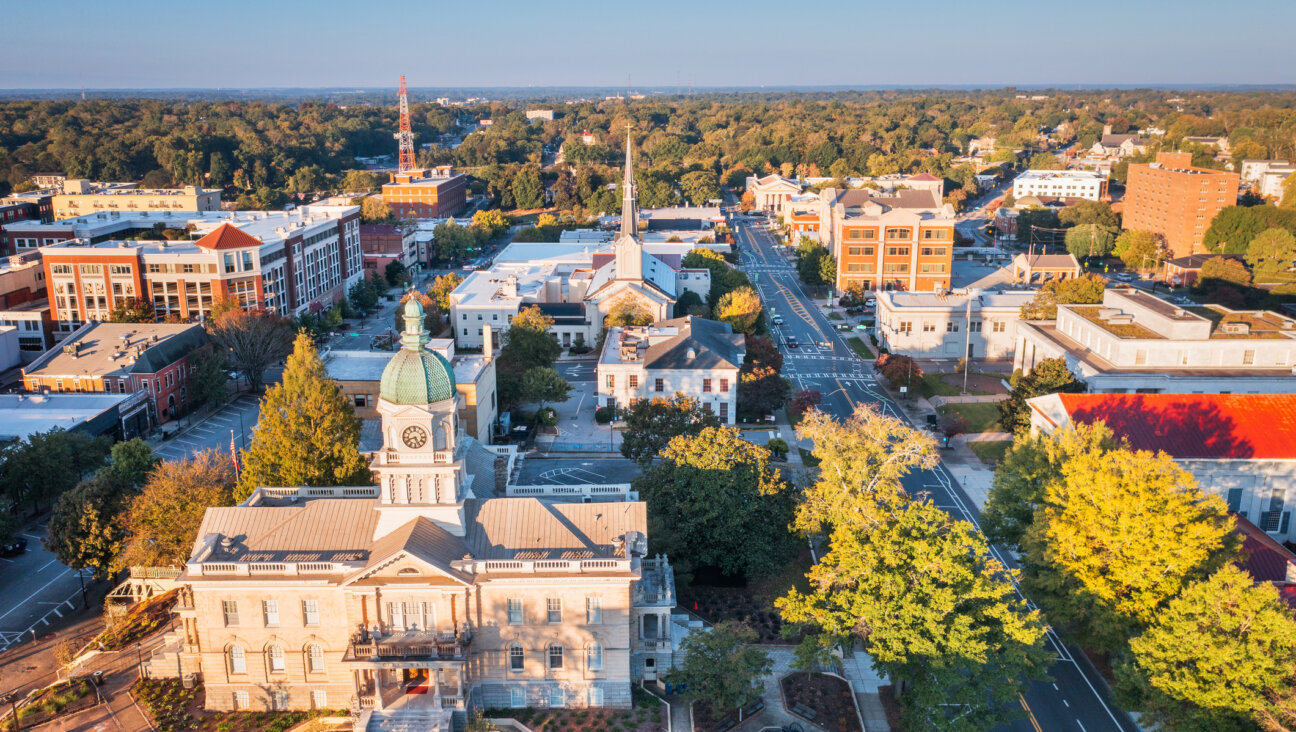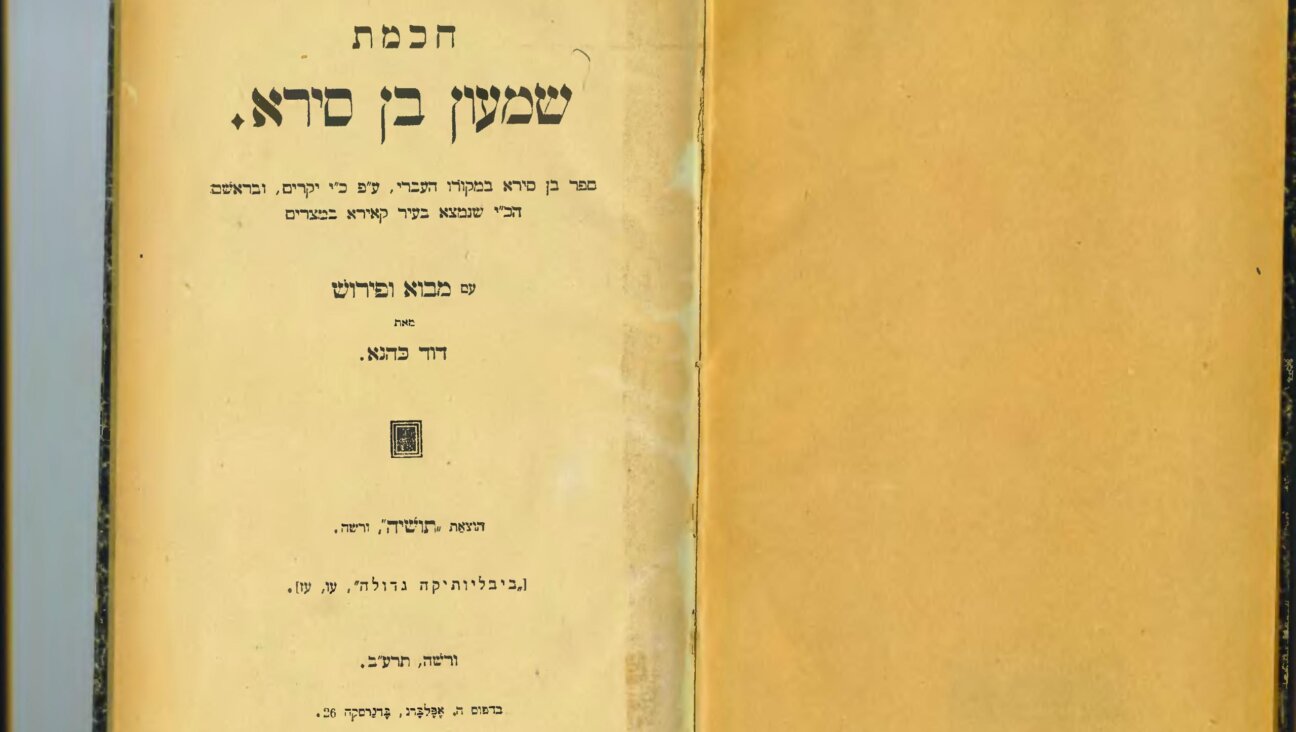How Hanukkah Entered American Mainstream

Hanukkah Monument: Throughout the generations, American Jews have continued to reinvent the holiday. Image by Getty Images
● Hanukkah in America: A History
By Dianne Ashton
NYU Press, 368 pages, $29.95
Hanukkah, I learned while attending a liberal Hebrew school in the 1970s, became an important Jewish holiday only in order to compete with Christmas. My teachers and, I imagine, many others said this with a mixture of sneer and pity: It was embarrassing for external forces to drive Jewish practice.
In her thought-provoking “Hanukkah in America,” Dianne Ashton, a professor at Rowan University, takes a different, almost subversive tack. The subtext of Ashton’s book boils down to this: If keeping Jews away from the lure of Christmas was the main reason to promote Hanukkah, what’s wrong with that? Unlike Rosh Hashanah and Yom Kippur, which are more sacred, their rituals more rooted in the Torah, Hanukkah could easily be redesigned for the American Jewish masses. The mainstream movements, Zionists, socialists, eco-Jews and Hasidim, all could (and did) find ways to tailor the holiday for them.
By the mid-19th century, Hanukkah’s themes had already surfaced in the debate among Reform Jewish rabbis in the United States over traditionalism and modernization. Traditionalists wanted to use the story of the second-century BCE revolt of the Maccabees against the Syrian Greek army, and the subsequent rededication of the Temple in Jerusalem, to highlight the need for American Jews to return to Jewish practice. Reformers wanted to de-emphasize the role of God in favor of a more America-friendly story featuring the liberty and revolution embodied in the Maccabees’ struggle against religious persecution.
By the late 19th-century, Ashton writes that rabbis saw Hanukkah as a “simple, joyous holiday that could easily be made grand,” as a way to lure children and, by extension, their parents, particularly their mothers, into active Jewish life. That the holiday usually occurs sometime during the few weeks before Christmas (2013, or 5774 on the Jewish calendar, is a notable exception) didn’t hurt. Public Hanukkah concerts proliferated, as did synagogue-based performances, featuring didactic plays. In the ensuing years, the traditions of candle lighting, latke eating and gift giving grew in popularity, in part to combat the seeming ubiquity of Christmas trees and gifts. While this phenomenon is often bemoaned, Ashton shows how this trend increased Jewish ritual and how Jewish shops, both on the Lower East Side of Manhattan and in sisterhood-run synagogue gift shops across the country, benefited. Plus, Hannukah, like Passover, succeeded as an American Jewish holiday because it could be celebrated solely at home. Throughout the book, Ashton shows command of a variety of sources, mixing in synagogue archives and the Jewish press with accounts of individuals remembering their childhood Hanukkah experiences.
Of course, Hanukkah’s malleability is not new. The holiday’s rites were developed in the Talmud, a few hundred years after the event. Dreidels are believed to have been first spun in the 1500s in Central Europe. The most famous traditional Hanukkah song, “Maoz Tzur,” was written in the 13th century; its English version, “Rock of Ages,” was penned in the 19th century.
Successive American Jewish generations have continued to reinvent the holiday. Turn-of-the-century immigrant Jews related to the Hanukkah theme of oppression. The Forward’s editor, Abraham Cahan, for example, saw the Maccabees as models for modern-day Socialists. Zionists, meanwhile, saw the Maccabees as nationalist prototypes. In the 1960s and ’70s, The Jewish Catalog, the Bible of the Jewish Renewal movement, instructed readers to “forage in the wood to find your own menorah.” Nor was it only leftist Jews who molded Hanukkah to serve their own aims in the late 20th century. Chabad has put itself on the national and religious maps with its huge public Hanukkah menorah displays.
In recent years, Hanukkah has even gotten a boost from two branches of America’s government: The Supreme Court has ruled in favor of religious displays in public places, while presidents have celebrated Hanukkah inside the White House. Indeed, Hanukkah has done so well in the United States that some Christians now believe Christmas is under siege.
Ashton’s historical analysis is strong, but her discussion of 21st-century Hanukkah issues — say, Chrismukkah cards and the influence of interfaith marriages — is less thorough. Still, when Ashton writes that Hanukkah has allowed “religious traditions to adapt to circumstance and so remain alive and vital” in the 21st century, it feels like a direct rebuke to what I learned in Hebrew school. In the spirit of free debate, I think my teachers would have approved.
Peter Ephross, whose work has appeared in The New York Times, is the editor of “Jewish Major Leaguers in Their Own Words: Oral Histories of 23 Players” (McFarland, 2012).

